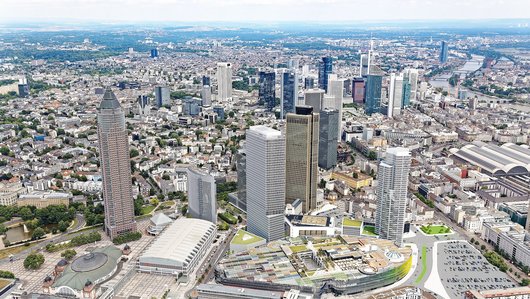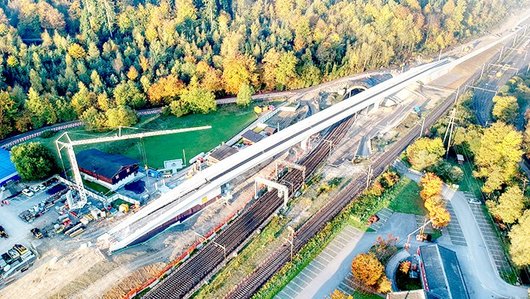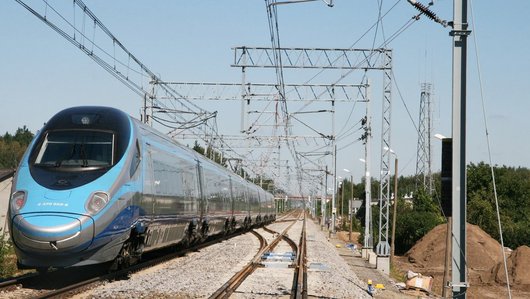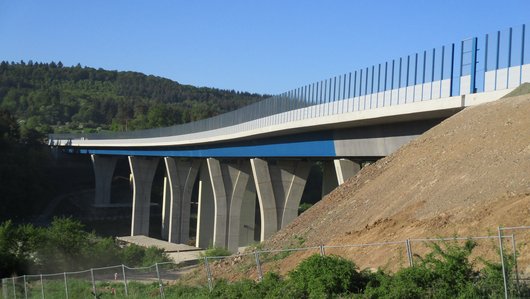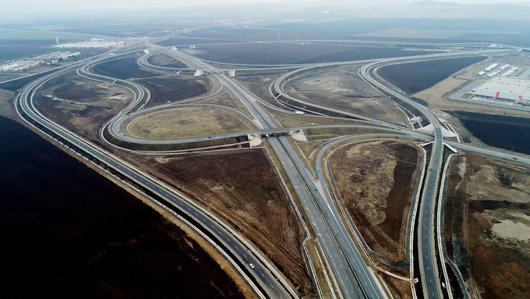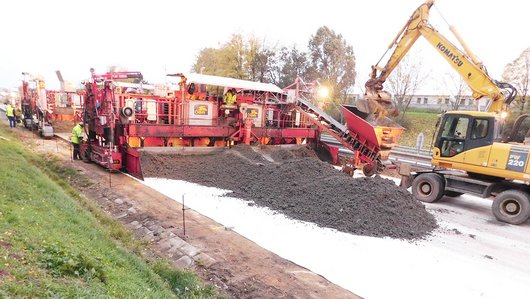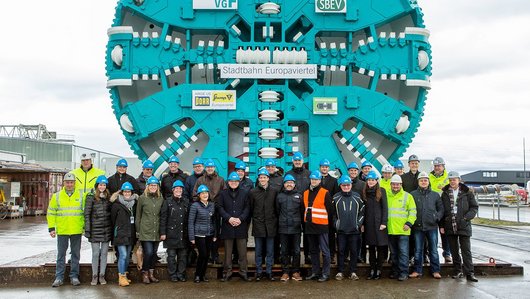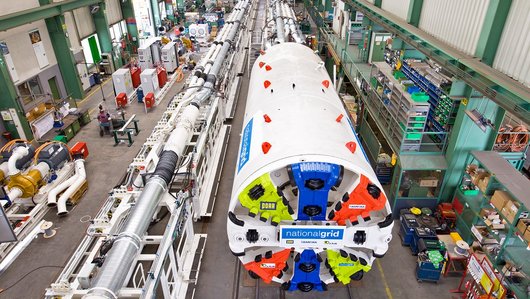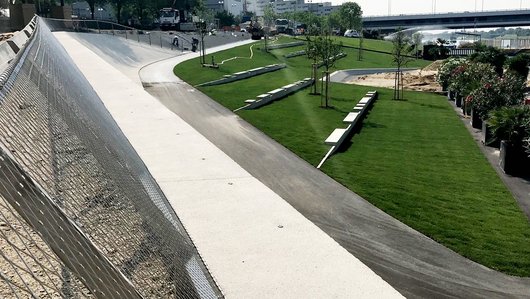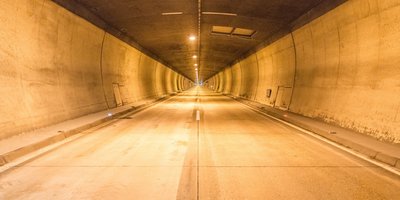
Rehabilitation of the Plabutsch tunnel
The consortium for the underground rehabilitation of the Plabutsch tunnel (ASPUT) was commissioned by Asfinag to construct 20 underground cross passages.
With a length of approximately 10km, the Plabutsch tunnel is the second longest road tunnel in Austria. In an effort to keep traffic disruption to a minimum, most of the works were carried out at night under challenging logistical conditions.
-
EmployerASFINAG
-
ContractorARGE PORR/STRABAG/PKE
-
Project typeTunnelling
-
Project scopeConstruction of 20 underground cross passages
-
Construction start01/2018
-
Construction end04/2019
Background
With a length of approximately 10km, the Plabutsch tunnel is the second longest twin-tube tunnel in Europe after the Gran Sasso tunnel in Italy and the second longest road tunnel in all of Austria after the Arlberg tunnel. To handle the daily traffic volume of around 30,000 vehicles, a twin-tube route has been in operation since 2004. The Plabutsch tunnel had to be comprehensively rehabilitated by 30.04.2019 due to a tightening of the Austrian Road Tunnel Safety Act (Straßentunnelsicherheitsgesetz or STSG). In accordance with the new STSG, escape route lengths must not exceed 500m and cross passages that may be used by emergency vehicles are required every 1,500m. The consortium for the underground rehabilitation of the Plabutsch tunnel (Arge Sanierung Plabutschtunnel Untertage or ASPUT) was commissioned as a subcontractor of umbrella consortium PORR, STRABAG and PKE to construct the cross passages, five of which are accessible by vehicle, 15 on foot. The construction period was 15 months. The total tunnelling length comprised 951m.
Two construction phases
The project was executed in two separate construction phases. The first construction phase, which took approximately eight months, involved excavating all the passages from the east tunnel to the inner lining of the west tunnel and fitting the inner linings, including those of the eastern terminal blocks.
During the second construction phase, from January to April 2019, the inner linings of the west tunnel were removed and the western terminal blocks were lined.
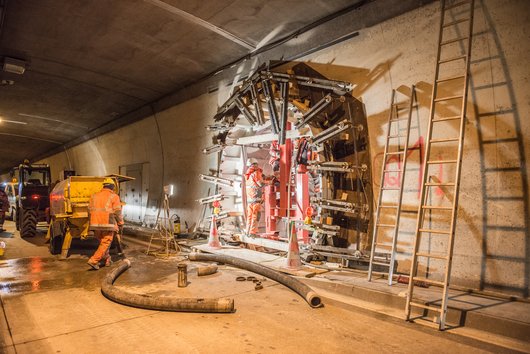

As a full road closure was not an option, we were only able to work during the night and on selected weekends.
The ultimate challenge: “Construction in existing contexts”
The challenges of rehabilitating an existing tunnel are entirely different from those involved in building a new one, especially if, as with the Plabutsch tunnel, the existing tunnel is part of a key arterial road and full road closure was not an option. It was not possible to close each tube for work other than during the night shifts, from 8 p.m. to 5 a.m., and occasionally during the day on selected weekends. After deducting the time required for setting up, cleaning and clearing the site, this resulted in a net working period of only six hours.
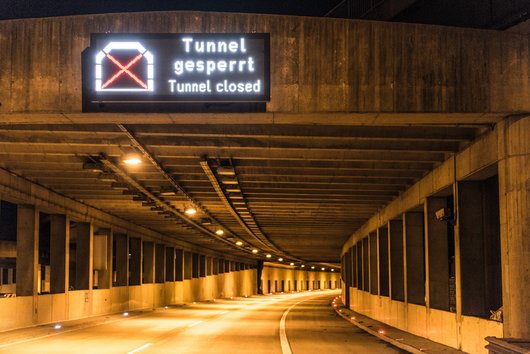

To ensure that work ran smoothly, it was necessary to complete at least one entire “round of advance” within this very short period of time. In tunnelling, this refers to the entire process: from drilling and loading the boreholes, blasting and removing the rock, to securing the tunnel with jetcrete, reinforcements and anchor bolts. Each of these individual steps required its own equipment, which had to be parked underground in the tunnel in the breakdown bays and the cross passages currently under construction.
The two existing tunnel tubes and associated facilities such as emergency telephone recesses, cables and fire-fighting water supply lines had to be optimally protected during ongoing work. This entailed using vibration measuring devices for all the blasting operations, for example.
The passages were excavated from the east tunnel towards the west tunnel, which was still open to traffic. To avoid endangering road users, blasting operations were performed at a round length of only one metre once work had advanced to six metres before the west tunnel. Traffic was stopped during blasting. Work was carried out mechanically, using only an excavator, three metres before reaching the west tunnel.
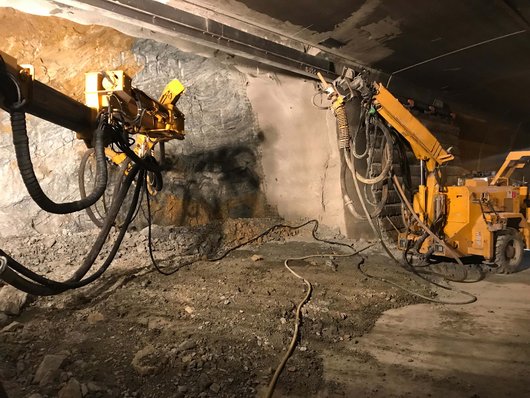

While work in conventional tunnelling projects is carried out sequentially on one subsection after the other, the work below the Plabutsch mountain range was carried out in parallel. This necessitates good communications and logistics.
Challenging logistics
Coordination between individual trades constituted another major difference to conventional tunnel construction projects. While the work on conventional sites is carried out sequentially on one subsection after the other, the work below the Plabutsch mountain range was carried out in parallel, requiring good communications and logistics. The length of the construction site, approximately 10km, also called for good logistical planning in advance. The long transport routes meant that each employee had to be equipped with the appropriate tools and assigned work tasks at the beginning of every shift to avoid the risk of further delays in an already very tight time window.
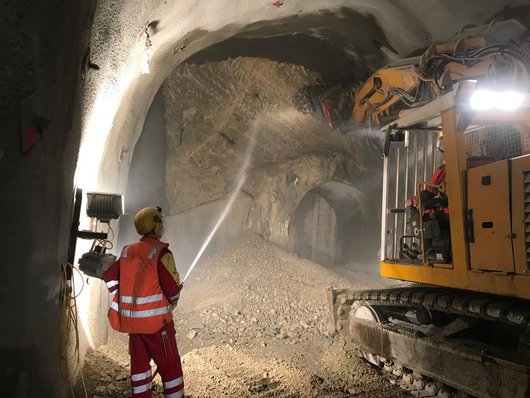

Conclusion
During the main phase, up to 50 workers per shift were working on concreting four tunnels and several cross passages. Three foremen and one shift supervisor were deployed per shift to coordinate the work.
Despite these challenging and unusual tunnelling conditions, the ASPUT consortium was able to complete the work on time and thus put Austria’s second longest road tunnel on track for an even safer future.
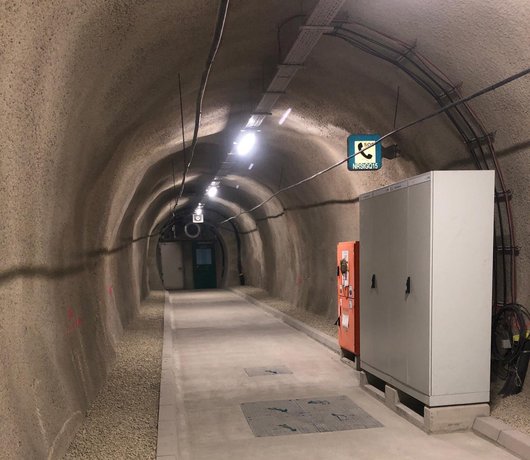

Technical Data
-
Driving techniqueBlasting, mechanical tunnelling
-
Number of cross passages15 GQ (on foot), 5 EQ (by vehicle)
-
Excavation cross section17m² - 61m²

